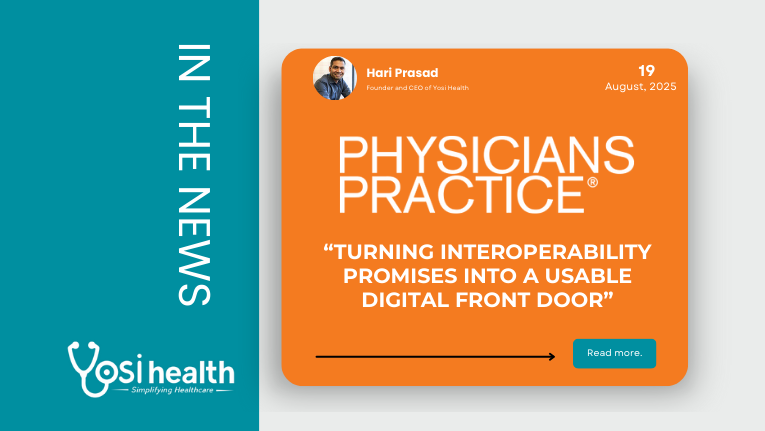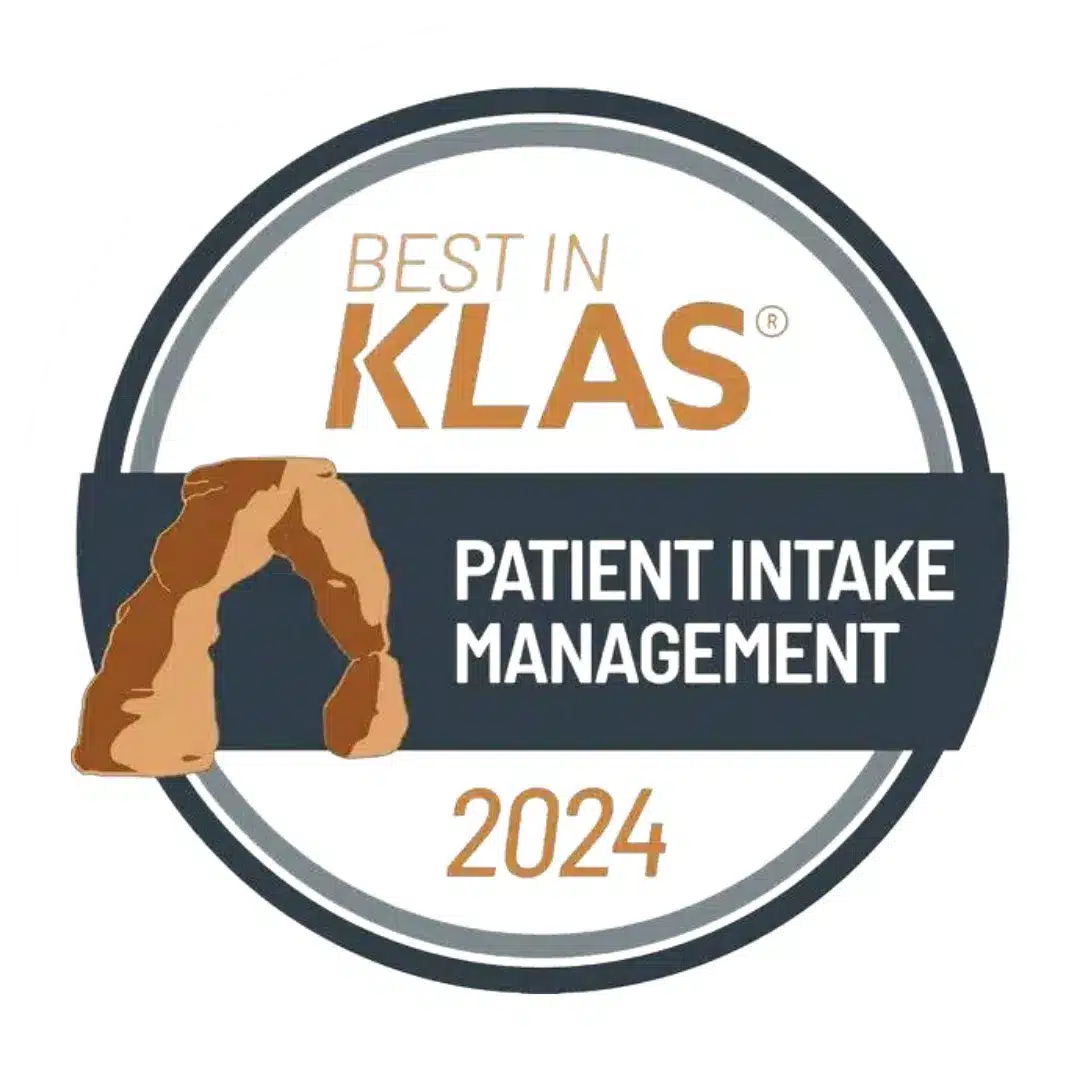
Turning interoperability promises into a usable digital front door
By Hari Prasad
Fact checked by Keith A. Reynolds
The White House’s initiative to enhance patient record sharing sparks a vital discussion on interoperability, aiming to streamline health care workflows and improve patient experiences.

Hari Prasad
The White House’s recent push to “kill the clipboard”, an ambitious effort to make patient records instantly portable and eliminate repetitive paper intake, has reignited the longstanding interoperability debate.
The announcement aims to speed adoption of FHIR APIs, identity services, and user-friendly data flows so patients can share their histories at “the push of a button.” While the end goal is worthwhile, moving from headlines to functionality at health clinics nationwide requires strategic work.
Here’s what practices should know about what a true “digital front door” can deliver and the steps vendors and health systems must take to make FHIR/API sharing actually useful and secure for both patients and clinicians.
First, the upside is tangible: a well-executed digital front door simplifies intake, reduces duplicate data entry, and shortens the time clinicians spend chasing records. When patients can readily share their history electronic with their practice, intake forms become a one-time activity rather than a repeated chore. Clinics can verify insurance, pre-collect necessary payment information, and route patients into the correct care pathways even before the office visit.
The CMS Interoperability Framework and related White House commitments are designed to accelerate that capability – by encouraging health networks and tech firms to adopt common APIs and directory services so data can be discovered and exchanged more reliably.
That said, the path from API promises to improved clinic workflows is subject to technical, operational, and privacy challenges. Practically speaking, many electronic health records and device vendors still expose data differently; lab measurements and imaging metadata are commonly stored as vendor-specific structures that don’t “just line up” when imported.
As several health system CIOs have noted, meaningful interoperability requires not only shared wire standards such as FHIR, but also agreed-upon semantics, mapping agreements, and a governance model that assigns responsibility for data quality and translations. Without those building blocks, clinicians can receive imported records that are incomplete, mis-formatted, or hard to reconcile with local views. This can create more work, not less for administrative staffs.
Privacy is the other critical consideration. Patients generally expect that their health data will be protected, but once record flow into third-party apps, HIPAA’s protections may not apply in the same way. Consumer-facing wellness apps often fall outside HIPAA and can be governed only by their own privacy policies.
That reality creates a “privacy paradox”: enabling easy sharing can improve care, yet it can also expose patients if the receiving app or intermediary isn’t trustworthy. Practices and vendors must therefore require strong contractual guarantees , insist on end-to-end encryption, and ensure transparent consent flows so patients understand who will hold and use their data.
To translate the promises of interoperability into day-to-day value for clinics, start with the digital front door: the set of patient-facing workflows that begin before the patient arrives.
Focus first on making intake data capture reliable and discrete. Instead of importing PDFs or scanned blocks of notes that require manual transcription, prioritize workflows that extract individual data elements, such as demographics, medication lists, and immunizations, in codified form so they can be reconciled automatically by the EHR. That reduces duplicate or erroneous entry and gives clinicians a clean, actionable view of a patient’s history at the start of the visit.
Patient identity and consent must be baked into those workflows. Accurate matching prevents misattributed records and reduces reconciliation work; practical solutions include multi-factor identity confirmation at registration and simple, transparent consent screens that explain what data will be shared, who will hold it, and for how long.
Pre-visit automation is another low-friction lever. When patients can update medications, upload images, verify insurance, and settle copays before arrival, front-desk bottlenecks shrink and clinicians encounter fewer surprises during the encounter.
Real-time eligibility checks and captured card-on-file arrangements help practices manage expected patient responsibility without back-and-forth billing. These steps also create cleaner, more complete records that make later API-driven exchanges far easier to integrate.
At Yosi, we’ve found that the practices that pilot deliberately and measure relentlessly have the most success. Don’t attempt a systemwide swap overnight. Start with a single use case such as a pre-visit med reconciliation, immunization history, or medication lists. Then run that through the full chain: patient capture, EHR ingestion, clinician reconciliation, and return exchange. Track time saved at check-in, the percentage of records that reconcile without manual edits, and clinician satisfaction. Iterative pilots surface practical edge cases – mismatched units, unmapped codes, or identity failures – before they become systemic headaches.
Finally, prepare the workforce for a new operational reality. Front-desk staff, clinical assistants, and coders will now play a central role in validating inbound FHIR data and counseling patients about app consent and payment flows. Provide concrete scripts and decision trees for common scenarios (what to do if a patient’s imported med list conflicts with the chart, how to escalate identity mismatches, how to explain consent revocation, etc.).
While this interoperability push is an important inflection point, the gains for practices will come from practical, front-line implementation. Ultimately, practices will need to capture better, match reliably, consent transparently, pilot thoughtfully, and train people to manage the new workflows. Those are the real levers that turn API promises into a working digital front door that saves time, reduces duplication, and improves the patient experience – without adding new burdens to clinicians.
Hari Prasad is co-founder and CEO of Yosi Health, a full-service technology ecosystem that connects patients with their providers through the entire care journey before, during and after the visit creating delightful patient experiences.
Click to Read the full article here.


